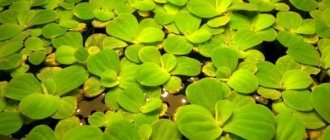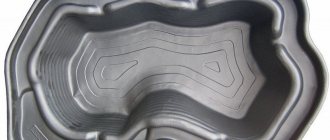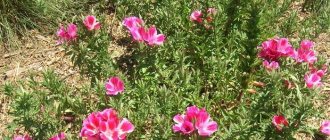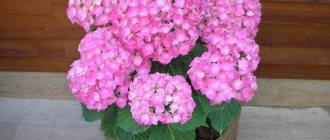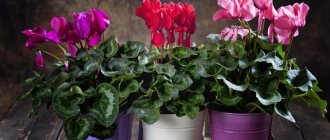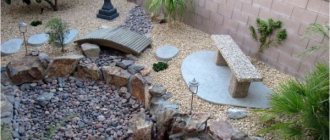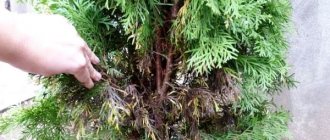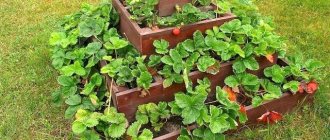Zinnia is a graceful and unusual representative of the Asteraceae family, which came to Russian gardens from the permitted forests of North and Central America. The genus contains many perennial and annual beautifully flowering herbs, as well as subshrubs, but only 2 low-growing species have taken root in Eurasia: Elegant and Narrow-leaved. The genus became truly famous after the ISS received the first plant that blooms in zero gravity, which turned out to be zinnia.
All types of this plant have common features:
- inflorescence height from 30 to 90 cm;
- lanceolate-shaped leaf blades with slight pubescence, located on the stems in opposite order;
- inflorescences are solitary, in the form of apical baskets with a diameter of 3 to 14 cm;
- peduncles are smooth, thickened in the upper part;
- receptacle cone-shaped;
- the wrapper of the baskets is imbricated, multi-row;
- the flowers on the outside are reed-shaped in a variety of colors, the inside ones are tubular, the color varies from yellow to brown.
The main advantage of zinnia is its long flowering. After sowing in the ground or planting seedlings, it begins in mid-June and continues until the onset of frost.
Description
Perennial or annual plants belonging to the Asteraceae (Asteraceae) family come from Mexico. In Europe, zinnia has been grown as a garden flower since the 18th century.
Depending on the variety to which zinnia belongs, its form is bushy or herbaceous.
The flower was named in honor of Johann Godfried Zinn. He worked as a botanist in the city of Gettingham and delivered a dried flower to Carl Linnaeus for description.
Zinnia is so popular all over the world that from 1931 to 1957 it was the symbol of the American state of Indiana.
The height of the shoots is from 0.2 to 1 m. There is slight pubescence on the stem and elongated elliptical foliage. The leaves can be whorled or oppositely arranged ; they are attached to the trunk without a petiole.
The leaf blades are large, entire, colored in a rich green color with clearly visible veins.
The corollas decorating the tops of the shoots are large (from 4 to 15 cm in diameter) and can be simple, semi-double or double . The plant exhibits a striking variety of colors, but the most common are:
- white;
- cream;
- pink;
- red;
- orange;
- yellow;
- purple.
- It has not yet been possible to breed zinnia with only blue (and its shades) petals.
It has not yet been possible to breed zinnia with only blue (and its shades) petals.
The bud consists of reed petals , which, depending on the shape of the flower (double or simple), are arranged in one or several rows.
In the center are collected small tubular flowers, painted yellow or brown.
The flowering period is long and takes time from the second half of June until the first frost.
The splendor of flowering is practically not affected by high air temperature, lack of moisture or, conversely, cool and humid weather. Zinnia is generally tolerant of weather anomalies; it is an extremely unpretentious plant .
After flowering ends, flat seeds appear in place of the tubular flowers.
Types and varieties
The variety of species and varieties of zinnia make it ideal for forming flower beds with multi-colored caps of silky petals.
Zinnia elegans
Representatives of the species grow to a height of more than 1 meter. The shoots are straight, not branched. The inflorescences are formed by reed and tubular flowers, different in structure. The palette of shades is wide: carrot, amber, snow-white and strawberry tones.
Hybrids and varieties are divided according to characteristics: by the configuration and structure of the inflorescences, by the time of budding and by the height of the stems. Majors are divided into early, middle and late according to flowering time. Based on the structure of the baskets, they are divided into terry, simple and semi-double.
According to the height of the shoots, majors are divided into:
- high zinnia - height up to 0.9 meters, loved by florists;
- medium zinnia - height up to 0.5 meters;
- low-growing or dwarf zinnia - height up to 0.3 meters.
According to the configuration of the inflorescences, varieties and hybrids are divided into 7 groups. The 3 groups below are incredibly successful.
Zinnia elegans dahlia flora
Strong bushes that take up little space, up to 0.9 m high. The leaves are 12 centimeters long. Baskets with a large number of petals demonstrate an extravagant color palette. The configuration of the baskets is hemispherical.
Varieties:
- Violet - a variety up to 0.8 m high, with a significant number of petals, strong baskets of blueberry color;
- Orange king - bush height 0.7 m, with a large number of petals, carrot-scarlet flowers;
- Envy (envy) / Envy - an original aristocratic variety with baskets - voluminous olive pompoms;
- Goddess - the flowers are brilliantly beautiful: large, ruby;
- Purple Queen (purpura Regina) – a distinctive feature inherent in the variety: large baskets of inky purple color;
- Polar bear - compact bush height 0.65 m, baskets framed by petals, snow-white with an olive tint.
Zinnia Lilliputian, or pompom
The height of the bush is up to 0.6 m. The inflorescences are small (up to 50 mm in diameter), similar to balls, the leaves are small.
Varieties:
- Red cap (Parum rubi) - bush height up to 0.6 m, amaranth inflorescences with a large number of petals. Shape – round or cone-shaped;
- Tom Thumb (Tom thumb) – bush height 0.5 m, scarlet baskets with a significant number of petals, similar to a crushed ball;
- Thumbelina - shoot height up to 0.5 m, multi-colored inflorescences.
Zinnia fantasy (Zinnia phantasia)
The height of the bushes is up to 0.7 m. The leaves are large. The inflorescences are formed by ligulate tube-shaped flowers.
Varieties:
- Fantasia - representatives grow up to 0.6 m, inflorescences with a large number of petals, varied colors;
- Gift (Donum) – scarlet baskets.
Zinnia haageana, or narrow-leaved zinnia (Zinnia angustifolia)
An annual with straight shoots, the leaves are not short, pointed. Small carrot inflorescences, double or simple.
Varieties:
- Glorien Shine. Branched representatives grow up to 0.25 m. The baskets are framed by a significant number of petals, at the base there are reed flowers of a dark carrot color, the tips are chestnut-scarlet;
- Persian Carpet Mixed Series. Two-color semi-double inflorescences of scarlet color with a white, lemon or carrot tint. The bushes look like an exotic carpet;
- English mixtures of the Classic and Starbright varieties (Adepto raptus). They grow up to 0.3 m. Thin shoots branch strongly and creep. Inflorescences are lemon, white or orange. The variety is cultivated as a ground cover;
- Sombrero. Representatives of the variety have purplish-brown baskets with an orange border.
Zinnia tenuiflora
The height of representatives of the species is 0.6 m, the stems are thin, light coral in color. Scarlet narrow reed flowers with curled ends.
Varieties:
- Red Spider is beyond competition. Representatives of the variety are decorated with ruby-colored baskets. The variety is characterized by a voluminous emerald lower part of the inflorescence.
Zinnia linearis
The species is similar to angustifolia zinnia, the leaves are not very wide and sharp. This is the most compact species that is grown by flora lovers. Ball-shaped bushes grow up to 0.35 m high. The baskets are also small. Lemon reed flowers with an orange edge.
Varieties:
- Golden eye. Reed flowers are snow-white;
- Caramel. The middle is black, and the reed flowers are an amber hue;
- Yellow Star. The inflorescences are straw-colored.
When hybridizing zinnia graceful and zinnia Haage, botanists obtained many hybrids. A favorite is the Profusion series, where the height of the bushes is 0.35 m and there are many tiny multi-colored daisies on them.
The Magellan series is also impressive. The plant grows up to 0.35 m. The color range of double inflorescences is wide: milky, strawberry, straw, carrot, peach.
Now gardeners grow the Swizzle series, consisting of two varieties:
- Cherry Ivory - wine-colored inflorescences, cream-colored ends of the reed flowers;
- Scarlet Yellow - scarlet inflorescences with rich lemon ends.
Growing zinnia from seeds
Growing zinnia from seeds is not difficult, but you need to take into account a few nuances.
Sowing
This event is planned for mid-April.
Before sowing seeds for seedlings, it is recommended to wrap them in a damp cloth moistened with Epin growth stimulator. Seeds treated in this way will hatch by the end of the second day of aging. Those seeds that did not hatch during processing will not sprout and are thrown away.
Boxes for seedlings should not be too deep, but wide enough. The container should have drainage holes - this will prevent the accumulation of moisture.
For growing zinnia , a universal soil that is sufficiently loose, permeable and nutritious is suitable.
It is not recommended to bury the seeds more than 1 cm. If you do not want to plant the sprouts after the third leaf appears, then it is better to plant them in individual peat pots.
Seedling care
Caring for seedlings is easy. It needs to be watered regularly when the top layer of soil dries out. After 3 leaves appear on the sprouts, the seedlings are picked from the common container into individual pots.
Before planting flowers in the ground, they must be hardened off. Hardening begins approximately two weeks before transferring to the flowerbed.
Zinnia: sowing seeds for seedlings (video)
To many gardeners, zinnias resemble miniature suns. Indeed, the bright reflections of these pretty “daisies” can decorate and warm the most inconspicuous corners of the garden. Caring for them is more than simple, so even a novice gardener can handle it.
Growing and care in open ground
Seeds can be planted directly into a flower bed. Caring for such crops is not significantly different from caring for seedlings.
When to plant
The timing of planting seeds in open ground is tied to return frosts. To ensure that the tender zinnia seedlings do not suffer from nighttime drops in temperature, it is better to plant the seeds closer to mid-May .
Landing Features
The soil on the site must be dug up and loosened before planting. During the loosening process, you need to remove weed roots , stones and other debris from the soil.
Mineral fertilizers or rotted manure are added to the soil prepared in this way and dug up again.
To plant seeds, make small holes with a step of at least 10 cm between holes. Up to 3 seeds can be planted in one hole. This will prevent the formation of bald spots in the flowerbed if some seed does not sprout.
For successful development of plants, the planting area must be well lit, protected from strong gusts of wind and drafts, and conduct moisture well.
Planting zinnia seedlings in a flowerbed is no different from sowing seeds , only larger holes are dug to accommodate the roots along with the earthen ball.
Watering
Watering is perhaps one of the most important stages in caring for zinnia. The flower does not tolerate stagnant moisture , but for beautiful lush flowering the plant requires moist soil.
Therefore, zinnia is watered abundantly, but is guided by the weather. During dry periods, water more often, during rainy periods - less often until watering is canceled.
When the moisture has been completely absorbed, the soil in the tree trunk circle needs to be loosened to prevent the formation of a hard, airtight crust.
The soil
Zinnia is undemanding when it comes to soil quality, but the plant will develop better on loose nutrient soils with good drainage characteristics.
Top dressing
In order for green spaces to actively develop and bloom luxuriantly, mineral complexes or rotted compost are added to the soil before planting.
Fresh manure is not suitable for fertilizer: it can provoke the development of powdery mildew and even burn the roots of the flower.
Pinching
Pinching stimulates the formation of side shoots , which ultimately results in more luxuriant flowering. Pinching can be done at the seedling stage, when the sprouts have produced at least 5 leaves: use sharp sterile scissors to cut off the top of the main stem.
Pinching can also be done after transplanting into open ground, but in this case the plant will take longer to form side shoots.
Transfer
Since in our climate zinnia is grown as an annual , there is no point in replanting it. When transplanting seedlings to a permanent place, it is recommended to carry out the procedure using the transshipment method, so as not to damage the root system.
Trimming
Regular removal of faded inflorescences prolongs the flowering of the bush and preserves its decorative appearance longer.
Using zinnias in garden landscape design
In landscape design, zinnias are considered one of the main summer growers. Despite the fact that the plant is considered a long-standing historical crop, this does not mean that it can only be used in country style or other retro projects. Thanks to the variety of colors, it fits perfectly into any landscape.
This flower has colorful large buds and is absolutely picky about care.
Zinnia can easily be called a favorite among the plants used to create mixborders. Definitely, zinnias in flower beds and flower beds will not get lost among other flowers.
Zinnia, or zinnia, is an annual and perennial flowering plant of the subshrub type in the Asteraceae family.
The plant is also used in the following ways:
- planted along paths;
- for decorating arabesques;
- tall varieties look great against the backdrop of garden trees;
- along outbuildings;
- suitable for growing in pots
- in mix design.
Prefers sunny, warm and open areas with well-drained and vitamin-rich soil.
This is interesting! If you want to design in a rustic style, zinnia can be planted together with chrysanthemums, calendula, marigolds, and daisies.
How zinnia is used in landscape design, a photo can be seen at the end of the article.
The key features of zinnia are poor frost resistance, exceptionally generative reproduction and high moisture consumption.
After flowering
When the plant has released all the buds and the corollas have faded, the zinnia needs a little more attention from the gardener.
How and when to collect seeds
Experienced gardeners recommend removing seeds only from the largest, straightest and most beautiful flowers . They do it this way:
- the flower is marked with a tag;
- wait until flowering ends and the seed box is formed;
- let it dry on the stem;
- carefully cut the box and dry it in a dry, well-ventilated area without direct sunlight;
- Store seeds in paper bags or linen bags.
Perennial zinnia in winter
In the southern regions, zinnia is prepared for winter by cutting the bush close to ground level and covering it with spruce branches .
In colder climates, it is impossible to preserve bushes in the ground for the winter. The zinnia should either be dug up and burned, or moved to a container to overwinter indoors.
Varieties of zinnia angustifolia
The most famous varieties are:
- “Persian carpet” is a bright floral mixture that, when planted en masse, creates a unique pattern reminiscent of an oriental carpet. The height of the bush can reach about 45 cm, the size of the buds is 6 cm. The inflorescences come in yellow, red, and brown.
- “Glorianshine” - double buds have a very interesting color: they themselves are yellow, but the tips are dark brown. The bush is low, does not grow higher than 25 cm.
- "Candy Stripe" - a flower very similar to the "Persian carpet". It is also called "Tiger" because the petals are striped.
Pests and diseases
Unfortunately, flowers are often affected by powdery mildew or brown spot . While the first disease can be cured with fungicides, spotting cannot be treated. The bushes will have to be dug up and burned.
Among the pests that pose a threat to zinnia:
- aphid;
- chafers;
- slugs
Slugs and beetles are collected by hand, and insecticides will help get rid of aphids.
Zinnia is a great plant for beginning gardeners. It does not require special care and is characterized by long-lasting lush flowering.
FAQ
Are zinnias poisonous?
Zinnias themselves are not poisonous, but they can cause allergic reactions if they come into contact with the skin. This is due to the alkaloids contained in this plant, such as nicotine and various terpenes. Therefore, ideally, always wear gloves when pruning zinnias.
Are zinnias suitable as cut flowers for vases?
Yes, zinnias are used as cut flowers. Some varieties last even longer in a vase than in a flowerbed, for example, hybrids of narrow-leaved zinnia (lat. Zinnia angustifolia).
Preparation for planting and fertilization
Zinnia is a very heat-loving and sun-loving plant. It is sensitive to frost, so it finishes flowering in early autumn. It is quite demanding on soils, preferring fertile lands with neutral acidity. This condition is dictated by the fact that abundant, long-term flowering takes a lot of energy, and with poor watering and fertilization, the flowers begin to lose their rich color, become smaller, the leaves wither and dry out. The culture is classified as cross-pollinating, but self-pollination is also possible.
Related article:
Flowers growing in shade and partial shade
The area intended for planting is carefully dug up, fertilized with humus, leaf soil/compost at the rate of 7-10 kg per 1 sq. m. m, mineral fertilizers (potassium sulfate, nitrophoska, superphosphate). The ground is dug up again, leveled and seeds are planted.
The plant must be fed with organic and mineral fertilizers not only immediately after planting, but also throughout the growing season - on average 2-3 times per season. The feeding scheme is as follows:
- The first approach is at the stage of active seedling growth, but long before budding. 1 tbsp. l. urea is diluted in 10 liters of water and watered at the root. As an option, you can use ready-made fertilizer “Flower” (1 tbsp) or its analogues.
- The second approach is at the budding stage. The preparations Raduga and Agricol, aimed at flowering plants, show themselves to be effective. For 10 liters of water take 1 tbsp. l. liquid fertilizer.
- Before fertilizing, it is advisable to treat the soil with wood ash. 2-3 tbsp is enough. l. dry powder per 1 sq. m.
- Before the buds begin to open, it is recommended to spray with the preparation “Bud”. Consumption according to instructions.
Wintering perennial zinnia
Those plants that are planted in open ground will not overwinter even with good shelter, because zinnia does not tolerate temperature drops down to -1 °C . But you can preserve flowers grown in tubs and pots at home. To do this, they will need to be brought indoors before frost begins (approximately at the end of September - beginning of October).
Such crops should be grown near a south or east window. Otherwise they will suffer from lack of lighting. It’s even better to hang a phytolamp over the crops and provide them with 12 hours of daylight. Zinnia should be watered as the soil dries, trying not to get moisture on the stems and buds of the plant. You will need to feed the flowers once a month.
Elegant zinnia will be an excellent choice for gardeners who want to decorate their flowerbeds with an unpretentious flowering plant. This crop looks spectacular, as confirmed by numerous photos, and caring for it does not cause much trouble.
Agricultural technology for growing zinnias
When planting these flowers, it is necessary to take into account all the nuances; growing zinnias, especially dahlias, requires some effort. First you need to choose the right planting site; this is extremely important for growing. Zinnias are light-loving plants; they should not be planted in the shade. It is recommended to set up an irrigation system; surface sprinkler watering is not suitable; these plants need watering at the root. The soil will have to be loosened constantly to provide the roots with oxygen saturation.
Plant bushes may be attacked by pests. Zinnia is susceptible to diseases; gardeners need to monitor the health of their pet.
To make the bush full, you need to pluck the top a little. This procedure is carried out after the flowers have grown and become stronger. If the gardener wants to grow flowers on long stems, pinching is not necessary.
Pest Control
Zinnia, like other cultivated plants, is susceptible to invasion by various pests. Who can attack this flower and how to get rid of parasites?
- Snails and slugs - in order to remove them from the flowerbed, you can lay out small pieces of roofing material under the bushes. In search of moisture, they will crawl under the roofing material, after which this material will only have to be taken out of the area.
- May beetles - they appear at the end of spring and, in large concentrations, can severely damage young plants. These pests are usually collected by hand.
- Aphids. A solution of tar soap works great against aphids, if there are few of them. But when the colony of parasites grows greatly, then in this case it is necessary to use more powerful drugs, for example, Fufanon.
Selection of partners for zinnia
When choosing companions for bright and hardy zinnias, first of all, you should pay attention to the contrast of flowering. Zinnias also look great in tone-on-tone compositions, but the shape and flowering pattern of their neighbors should always contrast with their baskets.
In inflorescences, with the exception of landscape and tremulous cosmos, zinnias always look somewhat sloppy. Ideal partners for zinnias are rightfully called mealy sage with its fiery inflorescences and fluffy shields of ageratums, which contrast perfectly in palette and texture. But verbena, calendula, and marigolds also look no worse next to zinnias.
The combination with autumn asters and chrysanthemums “works” if you choose varieties of partners with narrow, rolled petals or small inflorescences. Zinnias can be a successful addition to any “country” and landscape perennial - phlox, lofanthus, oregano, monarda, catnip.
Do you have zinnias in your garden? What plants do you combine them with? Tell us about it in the comments to the article or on our Forum.
Zinnia care
Majors are heat-loving plants that love bright sunlight, so the place for planting them needs to be selected accordingly. Zinnias are not picky about soil, but feel better in fertile loams. The plant is drought-resistant, but requires watering during periods of prolonged lack of rain. In its absence, the inflorescences become smaller and lose their brightness. Feeding is not necessary, but recommended. Zinnias are thanked for this by their abundant flowering.
Advice. It is best to feed majors with fertilizers with a minimum nitrogen content.
How to plant zinnia?
It is recommended to carry out this event in May-June, when night frosts have completely stopped and the earth has warmed up sufficiently. This condition is mandatory, since zinnia may die at low temperatures.
The technology for planting young seedlings is as follows:
- if, according to the recommendation, you prepared the site in the fall, then before planting the seedlings you need to dig it up again;
- we make rows and holes - since this crop needs space, it is necessary to leave distances between the bushes: at least 10 cm for low-growing plants, at least 20 cm for medium-growing ones, about 30 cm for tall ones and about 40 cm between rows;
- if the bed is in a low place, then to ensure good drainage, a little clean sand should be poured into the bottom of each hole;
- we remove the seedlings from the pots and, without shaking off the substrate, place them in the holes;
- Sprinkle each bush in the root area with soil and mulch with dry peat - the last step will help retain moisture in the substrate.
